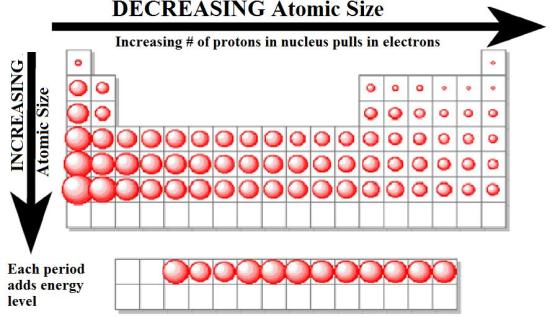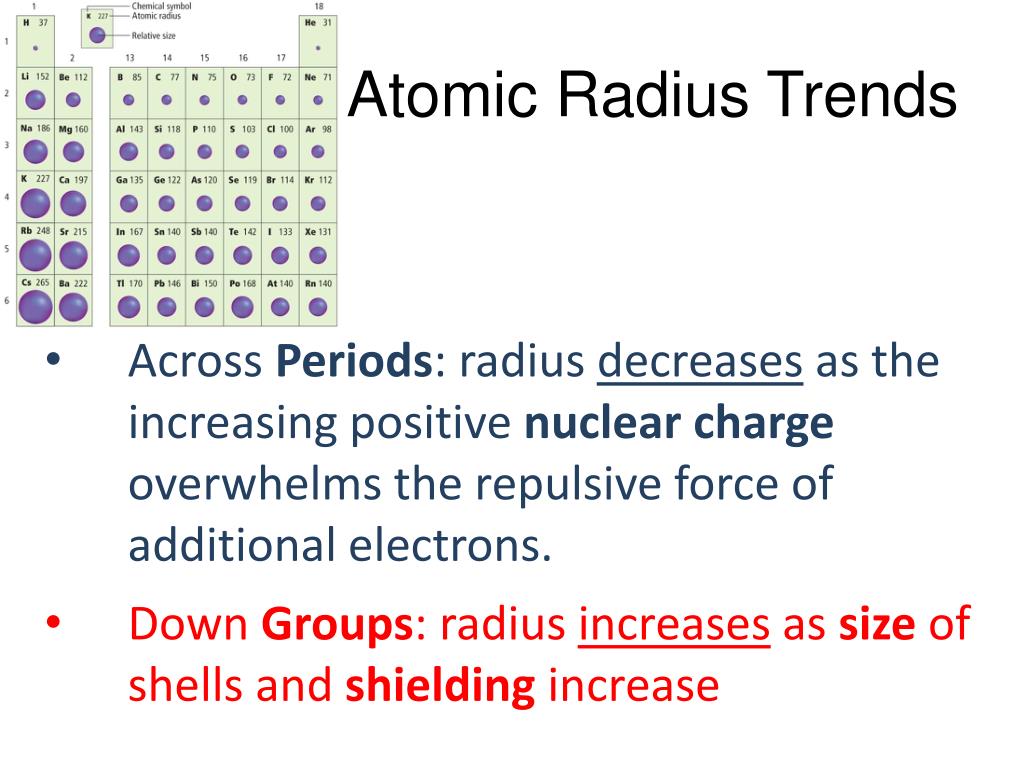
One way that chemists define atomic size is by using the atomic radius. Atomic size is defined in several different ways and these different definitions often produce some variations in the measurement of atomic sizes.īecause it is so difficult to measure atomic size from the nucleus to the outermost edge of the electron cloud, chemists use other approaches to get consistent measurements of atomic sizes. The region in space occupied by the electron cloud of an atom is often thought of as a probability distribution of the electrons and therefore, there is no well-defined "outer edge" of the electron cloud.

Use the concept of effective nuclear charge to explain why the atomic radii of the main group elements increase when we move down a group in the periodic tableĪtoms Have No Definite Boundary.Use the general trends to predict the relative sizes of atoms.Describe how the trend of atomic radii works for transition metals.Describe the trend of atomic radii in the rows in the Periodic Table.Describe the general trend in atomic size for groups and for periods.Describe the factors that determine the trend of atomic size.Describe measurement methods for atomic size.State the boundary issue with atomic size.The number of electrons held between the nucleus and its outermost electrons (called the shielding effect).The number of energy levels holding electrons (and the number of electrons in the outer energy level).The number of protons in the nucleus (called the nuclear charge).The actual trends that are observed with atomic size have to do with three factors. Each of these trends can be understood in terms of the electron configuration of the atoms. The two following this lesson will discuss ionization energy and electron affinity. The first lesson of this chapter is devoted to the trend in atomic size in the Periodic Table.


There are three specific periodic trends that we will discuss. This means is that as you move down a group or across a period, you will see a trend-like variation in the properties. In the Periodic Table, there are a number of physical properties that are not really "similar" as it was previously defined, but are more trend-like.


 0 kommentar(er)
0 kommentar(er)
